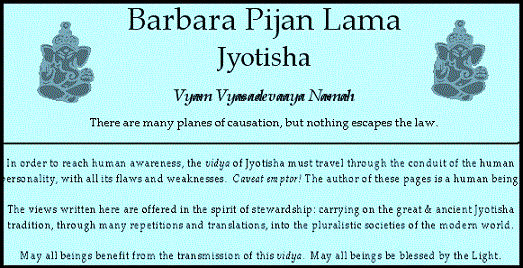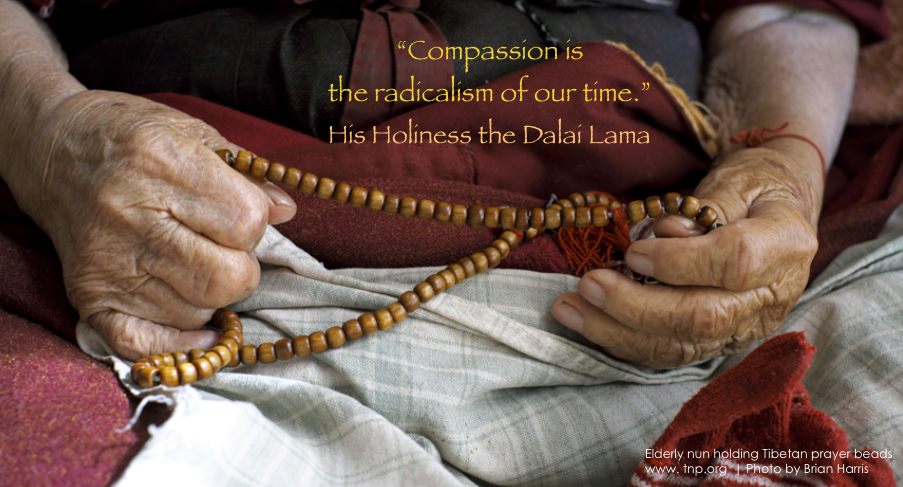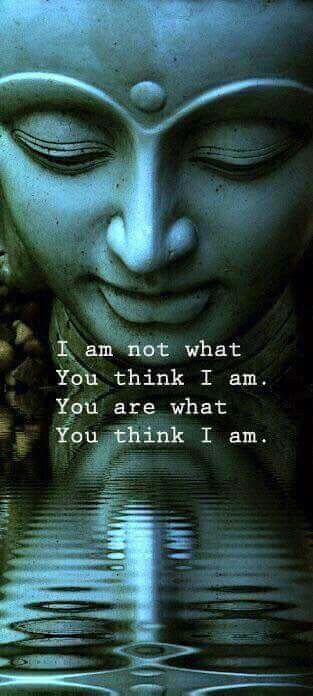
-
What does compassion mean?
-
What is compassion good for ?
-
Where does compassion come from?
-
What role does it play in survival?
-
What happens if there really is a threat to life?
-
How can lowering one's instinctive defenses possibly lessen chances of a physical attack ?
-
I believe in the principle of compassion. Isn't that enough ?
-
If rational argument rarely sustains compassion, what * does * work?
-
Plenty of people believe in compassion but can they do it when the survival instincts are raging ?
-
What is sympathy?
-
How are compassion and sympathy so different in psychic practice ?
-
why does sympathetic emotional merging reduce the discriminating neutrality of compassion?
-
Sympathy vs. compassion in marriage
tadyatha om gate gate paragate parasamgate bodhi svaha

Compassion
vs.
Survival
Compassion
vs.
Sympathy

Christ Teacher from the Book of Kells
en.wikipedia.org/wiki/Book_of_Kells
in the illustrative tradition of the Columban Monasteries, folio 32
en.wikipedia.org/wiki/Columbanus
If another person's pain evokes your fear, that is pity.
If another person's pain evokes your love, that is compassion.
If another person's pain evokes your hate, that is shame.
" Where the life of people could be saved by telling a lie,
there, lie would be truth and the truth lie."
~~ Padma Purana (Srishti kanda), 18.392
Compassion is master number 33.
Compassion generates its own light.
~~ Kryon, Oct-2014
" Be compassionate: for compassion is the root of all doctrines."
- Tirukkurala, tura. , sarga-25
Compassion is the desire for another to have freedom from suffering.
Love is the desire for another to have happiness.
~~ Bhagavad Gita 2.50

Tibetan Nuns Project www.tnp.org
Q:
You're always talking about compassion. What does compassion mean?
A:
Compassion means the direct opposite of dehumanization and devaluation , the direct opposite of belittling, reifying, and demeaning other humans. Opposite of contempt and Shame.
Compassion means being able to perceive each human being as having full human integrity.
Compassion is not about making excuses. Compassion is about being intelligent and skillful in crafting ethical solutions for ethical problems.
Mainly, compassion is an act of being present for another person's reality.
Compassion overrides the more primitive instincts to divide the world into us/them and self/other . Compassion is a symptom of spiritual and philosophical advancement.
It is a choice not an instinct. As a result compassion is rare, difficult to achieve, and almost impossible to sustain.
However, achieving compassion is definitely worth the effort, from a completely selfish point of view. It is recommended to work strictly from self interest!
Most humans have had the experience of being dehumanized: treated as a number, or as a job description, as outsider race or caste non-human, or as an unwilling financial, emotional, or psychic tool for someone else's gain. We know that being treated as a human garbage can for someone else's egoic-mind membrane projection is an exhausting, sickening feeling.
Who wouldn't want to avoid being used, abused, hated, and exploited?
What is compassion good for ?
The most basic and primitive of the three human brains, the "reptile brain" is programmed to ensure the immediate physical survival whatever it takes. As the fabulous comic performer Swami Beyondananda used to say, "the reptile brain doesn't solve problems - it attacks them."
The most natural, familiar, and instinctive response to threat = reptilian style attack: shoot first and ask questions later. The constant flow of unconscious survival signaling that humans receive from their base brain, or reptile brain, is an undeniable reality of human life.
Psychic reality conforms to the golden rule. As one gives, so one shall receive. Therefore, the single best insurance policy against becoming a victim of someone else's ignorant dehumanizing projections is to train oneself, as a human viewer, to habitually view other people as fully human.
- com = with, together, shared, common
- passion = feeling, pathos
Compassionate viewing occurs via a filter. The interpretive principles of the filter involve characterizing each sentient being as a spirit which is temporarily manifesting via a fleshbody, an emotional body, and a body of belief. Thus one posits first " there is a spirit inside that body" then secondly one may or may not respond to the entity.
The response is secondary. Most compassionate response is actually doing nothing.
This " viewing" practice is efficient. As a peaceful observing practice, compassion takes much less energy than constantly firing up the adrenal glands in order to response from fear. Compassion effectively reduces the state of chronic psychic depletion in which most people live (subsist). Compassion strengthens one's own aura and prevents other people's matching self-hatred energy from triggering a victim event in one's own life.
Victim means that which is eaten (victual). Compassion prevents the experience of being eaten alive by predatory energies of others.
Compassion is a good insurance policy and it works wonders in human relationships, but compassion is not natural for humans.
Dehumanization is unfortunately a much more natural response to threat than is compassion. Compassion is a choice whereas dehumanization is an unconscious instinct.
Where does compassion come from?
And what role does it play in survival?
Compassion is a relatively new development in human consciousness that is related to the new parts of our brains that have been added on to our basic reptile brain. These evolutionary additions to the brain stem are not needed for reproductive survival. They are more like options or accessories that produce all sorts of curious human behaviors which are not directly related to eating and killing competitors.
These optional new parts of the brain distinguish humans from their animal counterparts and link the human species at least potentially more closely to the divine. However, the optional brain parts really are optional. Most people don't use them very much. Our species has a long way to go before we learn to fully utilize the miraculous powers of the human brain.
Nevertheless, in every generation, there are some humans who have burned off enough ignorance karma to be liberated from the most basic survival fears and anxieties. This elite corps Typically, receives material protection, they are not raised in terrible survival conditions such as direct war or starvation etc.
hey typically emerge in stable, learned societies with plenty of food and protection. Under these beneficial circumstances, the elite are safe enough to develop some of the features of the newer parts of their brains. One of the resources in the new brain areas is memory - personal and species.
In hospitable environments, the spiritual labors of great minds who preceded us in history can be remembered by reading, receiving oral tradition, meditating to wake up the inner remembrance of one's own previous incarnations - basically, using memory as a way to"pick up where one left off" so that spiritual awareness can continue to advance across the generations.
These special few who are privileged to be safe enough to override the reptile brain's constant survival signaling -- and who furthermore receive the education necessary to connect with other privileged humans who are also safe and also educated in the philosophical and religious "memories " of their traditions - these are the bearers and developers of compassion.
ATTACHMENT VS. LOVING-KINDNESS
QUOTATION from
The Instructions of Gampopa : A Precious Garland of the Supreme Path
by Khenpo Karthar Rinpoche, p. 82
"It is possible to mistake attachment for loving-kindness and compassion.
Love and compassion are distinguished from attachment in that they apply equally to your friends and your enemies. Genuine love and compassion make no distinction based on your relationship to the object of compassion.
They are the wish that all sentient beings without exception have happiness and the causes of happiness, and the wish that all sentient beings without exception be free of suffering and the causes of suffering.
The keynote of those two attitudes is that there is no hope involved of any kind of return or any sort of personal satisfaction as a result of the happiness of others.
In the case of attachment to someone, you wish that person well but it is based on an identification with him or her as "my friend, my son, my daughter." This identification and this feeling of ownership or territoriality is related to wanting some kind of return. You enjoy the happiness of that person because you have identified with him or her, and therefore, in essence it is just wishing for your own benefit.
Such attachment can very easily turn to aversion, anger, and hatred. That is the difference between compassion and attachment."
I believe in compassion. Isn't that enough ?
So far there are not many people who can feel compassion or even really understand how compassion benefits their life.
Most people quite naturally feel under assault. They perceive scarcity, and scarce resources evoke the survival response of the reptile brain.
However, it is possible using the newer parts of the brain to override some of the knee-jerk responses that the anxious, urgent reptile brain rather compulsively sends into the normal every day consciousness.
The reasoning parts of the new brains (there are actually several brains interconnected) can make arguments for the opposite conclusion.
A reasonable and educated person in a time of peace and abundance can look around and say, "Gee, despite feeling tremendously anxious and competitive and laboring under a daily fear of annihilation, things are actually pretty much OK out there. I will quite likely survive all day tomorrow, if not fully through next week."
In other words, the rational brain can talk-down the reptile brain by proving to itself that reacting instantly to the its constant survival signals = really not necessary.
Most people who suffer from scarcity anxiety - the fear that there just isn't enough, despite abundant reasonable evidence that there is plenty - are doing serious battle with their reptile brains.
Normally survival anxiety trumps the reasoning process, because its terror signals are much stronger that the new brains rational arguments. The reptile brain was there first, and its signals have priority.
- Compassion sees each person as a full human equal to the self
- Survival anxiety sees each person as a vicious competitor for scarce resources
= pretty much opposites.
Chances of an "argument" for compassion consistently overriding the much more powerful anxiety signals -- pumped constantly into the field of awareness by a biologically dominant limbic survival brain = slim indeed.
If rational argument rarely sustains compassion, what does work?
So far historically, the best method for allaying the constant fear and anxiety of the reptile brain seems to be sitting meditation.
For the tiny elite that is even interested in developing compassion - the elite that has been raised in safety, nourished, and educated in the spiritual memory of their tradition - the battle for compassion is fought in the meditation hall. Here, ancient techniques allow anger, fear, stress responses, frustration, and victim memories to rise into consciousness.
The reptile brain gets full air time - one understands the survival response, acknowledges, and validates it. But then, in a dramatic behavior change made possible by the new brain, one chooses to simply not respond. The rage, fear, terror, impulse to dehumanize one's competitor making it so easy to hurt, oppress or kill them - this is all set aside .
Hmm, says the meditator, how interesting. One at no time suppresses the urgent survival message, always validates the truth of our human programming, but consciously overrides the hormonally driven message to hate, kill, or deny another's divinity.
Taking the meditative practice out into the world, the meditator gets some intensive practice with overriding core instincts, putting the new brain to a critical test.
Plenty of people "believe in" compassion but can they do it when the survival instincts are raging?
Normally, no.
Rational arguments for compassion normally fail under pressure , as noted above.
However, psychic meditation practice in any of the great religious traditions has a much better track record for strengthening the new brain's power to choose compassion.
Meditation practice repeats and repeats and repeats the conscious act of overriding the instinct to dehumanize a person who looks like, sounds like, and smells like a threat to my access to scarce resources.
In the real-world test, where mere rational arguments collapse under survival pressure, those who practice meditative overriding much more often succeed.
What happens if there really is a threat and reversing the instinct to dehumanize actually gets the meditator killed?
First of all, the risk of physical annihilation = generally acceptable to most people who have reached the practice of true compassion.
Once high levels of philosophical and psychic awareness have been reached, the person has already discovered their eternal divine identity. As a result, compassionate folks are rarely much attached to their temporary physical identity.
But secondly and perhaps more important for us beginners, compassion - the act of overriding human survival instinct to dehumanize others - typically prevents violent attack.
How can lowering one's instinctive defenses possibly lessen chances of a physical attack?
The reason is matching energy . An attack by one person upon another is a type of relationship . A horrible relationship, but essentially and crucially a relationship.
Attacks happens when person A feels angry and scared, and person B responds to A's feeling with their own angry fear. Then the dance begins.
However, if person B has the skill of true compassionate, bcan recognize and validate A's angry survival fear without exciting B's own fight-or-flight-or-freeze response. Compassionate B will sense A's fear but B her/himself will not succumb to fear.
Rather, compassionate B remains physically present but psychically disconnected. On a psychic level, disconnecting from the matching pictures that people use to form relationships renders one psychically invisible. It seems to angry, survival-driven A that B is really not there .
B is not projecting the matching energy which says "I feel fear too. Either you hurt me or I hurt you or both, that's what the reptile brain says we have to do."
B's lack of fear reaction makes B invisible to A; and A goes looking elsewhere for someone else to match A's angry fear pictures. A must look for another angry-fear partner because B is not matching A.
It is important to note that compassionate B is not being courageous, or being ethical, or rationalizing, or psychologically suppressing B's awareness of the terror and survival response.
B is practicing meditation.
As Trulshig Rinpoche says, "That's how it works!"
en.wikipedia.org/wiki/Trulshik_Rinpoche
The practice, for those who recognize its value, substantially prevents violence toward the practitioner due to the psychic invisibility effect of not matching the aggressor.
The practice of meditation eliminates ignorance of the instinctive survival response, and replaces that ignorance with the wisdom of compassion.
QUOTATION
14th Dalai Lama 1935- Policy of Kindness Tenzing Gyatso
Answers: Discussions with Western Buddhists, p. 36
"We Buddhists are supposed to save all sentient beings, but practically speaking, this may be too broad a notion for most people.
In any case, we must at least think in terms of helping all human beings. This is very important.
Even if we cannot think in terms of sentient beings inhabiting different worlds, we should nonetheless think in terms of the human beings on our own planet.
To do this is to take a practical approach to the problem. It is necessary to help others, not only in our prayers, but in our daily lives. If we find we cannot help another, the least we can do is to desist from harming them.
We must not cheat others or lie to them. We must be honest human beings, sincere human beings."
How are"compassion"and"sympathy" so different in psychic practice ?
The difference = the motive.
" Compassion" is the act of attributing full human value to another human being.
Compassion is the opposite of dehumanization.
To feel compassion for another human being, One need not agree with the person. one might in fact violently disagree with the object of one's compassion. One might have a legitimate social ethical reason for having an oppressive relationship to the person, including imprisonment, police control, wartime brutality, tax collection etc.
The socially oppressive relationship would not however prevent compassion.
If I am a prisoner I can feel compassion for my jailer. Certainly I do not agree with my jailer, admire my jailer, or have the least voluntary interest in developing a relationship with him. I resent my situation and heap ethical blame upon the system ([akashic memory patterns]) that got us into a negative, forced, oppressive partnership in a miserable setting.
[akashic memory patterns] are often in a poorly understood word called // Karma // can function as a meta-cultural accounting system that does not conform to ethical law except in the very broad sense of the Golden Rule. // Ethos // [from Greek /eth/ meaning /folk/] = the custom of a particular tribe. // Karma // which is a system of [akashic memory patterns] often creates necessary-for-the-plan but nevertheless unethical relationships as seen from a local, cultural point of view.
Compassion However, allows one to grant one's own jailer full human status.
One accepts that his experience is completely valid for the jailer.
In addition, if one is skillful, one may benefit from my awareness of his valid humanity by knowing that since he is a human just like me, his feelings are likely to resemble mine.
Free of reactivity, one may target one's own intelligence toward detecting and avoiding most of the negative energy that the jailer may have been throwing at one.
-
Satyagraha 1869-1948 Mahatma Mohandas Gandhi had enormous compassion for the British Colonial oppressors of pre-independence India. He severely disagreed with their position. Gandhi took fierce and radical steps to run the British right out of India, but he never at any time dehumanized his opponents.
-
H.H. Dalai Lama has always asserted that he experiences full compassion for the Chinese oppressors of Tibet. H.H. acknowledges absolute disagreement with the Chinese position, and he has committed his life to removing the Chinese military government from Tibet. But H.H. at no time dehumanizes the enemy or says that because of their moral wrongs, the enemy loses humanity.
There is no question that, politically, financially, emotionally, or culturally each incarnated human has and will continue to have enemies! Ari bhava = imbalances = enemies, debts, disease = is present in every nativity.
Compassion does not suppress or deny the reality of enemies, criminals, or exploiters.
Compassion simply overrides the human survival instinct to dehumanize the enemy.
~~ Gospel of Luke 11:34-35
" The light of the body is the eye:
Therefore, when thine eye is single, thy whole body also is full of light;
but when thine eye is evil, thy body also is full of darkness.
Take heed therefore that the light which is in thee be not darkness."
OK, then what is sympathy ?
The two words com-passion and sym-pathy are very similar in normal language, but in psychic practice we distinguish between
-
compassion meaning non-dehumanization, or not getting sucked into matching energy, versus
-
sympathy meaning getting sucked into matching energy (any kind of energy)
Sympathy is considered a virtue by most types of social ethics, because sympathy is a calming and harmonizing behavior. Sympathy is believed to enhance peaceful relationships.
Sympathy is often confused with love and affection - but it's important to understand why sympathy isn't love, and why sympathy isn't usually a good thing within relationships.
Psychically, sympathy is a problematic low-awareness behavior akin to guilt, pity, stockholm Syndrome etc. Sympathy means psychically matching another person's feelings, identifying with another person's emotions and allowing that person's emotions to mix with one's own.
 Compassion requires clear separation between two minds.
Compassion requires clear separation between two minds.
Clear separation has no emotional or rational content.
Clear separation is a psychic condition of complete neutrality to the other person's thoughts and feelings.
Neutrality is neither attraction nor rejection; neither agreement nor disagreement.
In a state of compassion, the other person's reality can be acknowledged and validated without getting involved in any reactions to what they are doing or not doing, thinking or not thinking, and - especially - feeling or not feeling.
The essential prerequisite for achieving compassion is the ability to manage one's own instinctive, self-defensive responses to the presence of another human in one's psychic environment.
The essence of this self-management capability is knowing how to enter a state of neutrality toward another person.
Sym
= same
pathos
= feeling
Sympathy i nvolves the merging of the feeling-fields of two (or more) distinct persons
Sympathy"same feeling" the loss of clear boundaries between identities.
Sympathy often involves the voluntary or involuntary loss of neutrality ,
loss of mental discriminating awareness that victim-and-perpetrator are psychically matched
Consequently, unfortunately, sympathy often results in loss of compassion.
Many people confuse sympathy with compassion, but in fact these two conditions are opposites - psychically speaking. Sympathy is highly reactive and merging.
When sympathizing with a victim, the sympathizer can simultaneously judge the oppressor. Sympathy for the purported victim can result in feeling anger and hate toward the perpetrator of the crime, which dehumanizes the oppressor.
When sympathizing with one who is feeling loss or matching the emotional energy of the principle of loss, the sympathizer may get stuck in reactive guilt and grief that prevents compassionate action toward healing.
Sympathy is a stuck state, areactive miasma of over-identifying with other people's trauma, that erodes clear neutrality and blocks the compassionate intelligence which is needed to heal the wound.
Sympathy is identifying with someone else's reptile brain. When stuck in sympathy, all the intelligence in the relationship is engaged in matching energy.
In the very short term, matching energy can be a bonding experience. But in the longer term, investing the psychic energies in bonds of sympathy leads to an us-against-them gang mentality. Sympathy keeps its participants in psychic bondage to the matching emotion.
A single defensive emotion - national pride, shared fear of a common enemy, cultic love of the guru - can temporarily bond a group. But these bonds of sympathy prevent independent perceptions. Sympathy prevents neutrality. Bonds of sympathy require repeating and intensifying the shared emotion, and to dehumanize everyone who does not match the group energy.
Sympathy vs. compassion in marriage :
In marriage in particular, bonds of sympathy are a poor foundation for lasting happiness. A couple that uses the us against them attitude toward the outside world creates the illusion of solidarity based on sympathy. But in the process this exclusive solidarity prevents the formation of community.
Sympathy isn't love. Sympathy is "codependent" matching energy, which keeps both people stuck in their trauma and blocks the neutral awareness they need to find new ways to heal.
However, neutral awareness and ongoing validation of the humanity of the Other - regardless of whether we emotionally comprehend or rationally agree with the partner - form the only truly viable foundation for marriage.
14th Dalai Lama 1935- Policy of Kindness Tenzing Gyatso~~ H.H. Dalai Lama, The Dalai Lama at Harvard: Lectures on the Buddhist Path to Peace
" Question
-
When a practitioner of the Great Vehicle vows not to enter into nirvana until all beings are liberated,
-
how is it possible to fulfill this vow?
Answer:
Three modes of generating an altruistic intention to become enlightened are described -- like a king, like a boatman, and like a shepherd.
-
In the first, that like a king, one first seeks to attain a high state after which help can be given to others.
-
In the second, like a boatman, one seeks to cross the river of suffering together with others.
-
In the third, like a shepherd, one seeks to relieve the flock of suffering beings from pain first, oneself following afterward.
These are indications of the style of the altruistic motivation for becoming enlightened.
In actual fact, there is no way that a Bodhisattva either would want to or could delay achieving full enlightenment.
As much as the motivation to help others increases, so much closer does one approach Buddhahood."

Westwind Beach Oregon = photo by Will Morgan
QUOTATION
14th Dalai Lama 1935- Policy of Kindness Tenzing Gyatso.
(2003). The Compassionate Life . Wisdom Pub.
" Compassion without attachment is possible. Therefore, we need to clarify the distinctions between compassion and attachment.
Because of this firm foundation, atruly compassionate attitude toward others does not change even if they behave negatively.
- Genuine compassion is based not on our own projections and expectations,
- but rather on the needs of the other: irrespective of whether another person is a close friend or an enemy,
- as long as that person wishes for peace and happiness and wishes to overcome suffering,
- then on that basis we develop genuine concern for their problem.
For a Buddhist practitioner, the goal is to develop this genuine compassion, this genuine wish for the well-being of another, in fact for every living being throughout the universe."
QUOTATION
14th Dalai Lama 1935- Policy of Kindness Tenzing Gyatso (1994). The Path to Enlightenment. Glenn H. Mullin (Trans. and Ed.).
" At the moment the world's spiritual traditions have greatly degenerated. It is very important in such times that the practitioners themselves make especially strong efforts to gain realization.
To permit the lineages of transmission to disappear is to allow the world to plunge into darkness.
The great Vasubandhu wrote, "Buddha, who is like the eye of the world, is no longer to be seen.
His great successors, who realized the most profound teachings, also have passed away. Who equals them?"
It might be asked, who is there today to equal the master Vasubandhu?
Who practices as well as did Milarepa?
Such people are rare. We should remember that everything but Dharma is useless at death , and instead of wasting our lives on meaningless activities, we should blend our mindstreams with the teachings and with practice. Doing so benefits us as individuals and benefits the world by strengthening its spiritual basis.
Each of us has to be able to feel the pride that we ourselves can reach perfection, we ourselves can attain enlightenment.
When even one person indulges in spiritual practice, it gives encouragement to the guardian spirits of the land, and to the celestial deities who have sworn to uphold goodness.
These forces then have the ability to release waves of beneficial effects upon humanity. Thus our practice has many direct and indirect benefits. ...If we practice the teachings and live the ways of Dharma, all the natural forces of goodness will be behind us."
QUOTATION14th Dalai Lama 1935- Policy of Kindness Tenzing Gyatso
and Alexander Berzin. (1997). The Gelug/Kagyu Tradition of Mahamudra .
" If we are feeling very nervous all the time, the first step toward doing something to remedy the situation is to take ourselves and the quality of our life seriously.
Suppose we are walking down the street and we step on a bug and partially crush but have not actually killed it.
If we continue walking and ignore the bug's experience of its leg being crushed or severed, we do so because we do not take the insect and its life seriously.
We have no respect for it.
If we treat ourselves no better than we do a bug and ignore our innermost pains and anguish, that is most unfortunater.
Our tension and stress do not go away by denying them or avoiding taking an honest look. And admitting that something is amiss is not the same as complaining about it and feeling sorry for ourselves.
Nor does it imply that something is fundamentally wrong with us and we are guilty of being a bad person because we are nervous.
Being objective, not melodramatic, and remaining non-judgmental are essential for any healing, spiritual process."
Selflessness in Context: Ultimate Bodhichitta
QUOTATION
14th Dalai Lama 1935- Policy of Kindness Tenzing Gyatso.
(2005). Essence of the Heart Sutra: The Dalai Lama's Heart of Wisdom Teachings. Thupten Jinpa (Trans. Ed.). Wisdom Publications
" Let us return for a moment to the beginning of [the Heart] Sutra where the Buddha enters into the meditative absorption called"appearance of the profound"and Avalokiteshvara beholds the practice of the profound perfection of wisdomr.
Generally speaking, the expression "appearance of the profound" refers to the bodhisattva deeds, which are encompassed in the practice of the six perfections. Here, however, the expression refers particularly to the perfection of wisdom, known in Sanskrit as prajnaparamita.
What the text means by "perfection of wisdom" is a direct, unmediated realization of emptiness that is also called "ultimate bodhi-chitta."
This is not the direct realization of emptiness alone; rather it is this direct realization in union with bodhichitta--the aspiration to become a buddha in order to free all beings.
This union of wisdom and method constitutes the first bhumi, or level of bodhisattva attainment.
The importance of this altruistic aspiration cannot be overstated.
Bodhichitta is not only important as a motivating factor at the beginning of practice, it is also important as a complementary and a reinforcing factor during every stage of the pathr.
The bodhichitta aspiration is twofold, comprised both of
- The wish to help others
- And of the wish to become enlightened so that one's assistance will be supremely effective."
Dalai Lama on different techniques for developing compassion
QUOTATION from
Tenzing Gyatso with Howard C. Cutler, m.D.. (1998). The Art of Happiness: A Handbook for Living
" ...if people have compassion, naturally, that's something they can count on; even if they have economic problems and their fortune declines, they still have something to share with fellow human beings. World economies are always so tenuous and we are subject to so many losses in life, but a compassionate attitude is something that we can always carry with us.
...Of course, in attempting to explain to someone the importance of compassion, in some cases, you might be dealing with a very hardened, individualistic, and selfish person, someone concerned only with her or his own interests. And it is even possible that there are people who may not have the capacity to empathize with even someone whom they love or who may be close to them.
But even to such people, it is still possible to present the importance of compassion and love on the grounds that it's the best way to fulfill their self-interests. They wish to have good health, live a longer life, and have peace of mind, happiness, and joy. And if these are things that they desire, i've heard that there is scientific evidence that these things can be enhanced by feelings of love and compassion.
...educating someone about these facts and scientific studies could certainly encourage some people to cultivate a more compassionate state of mind. But I think that, even aside from scientific studies, there are other arguments that people could understand and appreciate from their own practical or direct everyday experience.
For example, you could point out that lack of compassion leads to a certain ruthlessness.
There are many examples indicating that at some level deep down, ruthless people generally suffer from a kind of unhappiness and discontent, people like Stalin and Hitler. Such people suffer from a kind of nagging sense of insecurity and fear.
Even when they are sleeping I think that sense of fear remains...these people lack something that you can find in a more compassionate person--a sense of freedom, asense of abandonment, so when you sleep you can relax and let go.
Ruthless people never have that experience. Something is always gripping them; there is some kind of hold on them, and they aren't able to experience that feeling of letting go, that sense of freedomr.
...There are always different degrees of benefit that one might receive from practicing various methods and techniques, depending on one's particular circumstances.... First, through learning, thoroughly understanding the value of compassion--this gives you a feeling of conviction and determination.
Then, employing methods to enhance empathy, such as using your imagination, your creativity, to visualize yourself in another's situation. And certain exercises or practices that you can undertake, such as Tong-Len, serve to strengthen your compassion.
But I think it's important to remember that these techniques...were developed to help as many as possible, at least some portion of the human population. But it was never expected that these techniques could help 100 percent of people, the entire human population.
...the main point really, if we are talking about various methods to develop compassion, the important thing is that people make a sincere effort to develop their capacity for compassion. If they make their best efforts to be kinder, to cultivate compassion and make the world a better place, then at the end of the day they can say, "At least I've done my best!"
Compassion and Love - Made by Nature
QUOTATION
14th Dalai Lama
A Policy of Kindness: An Anthology of Writings By and About the Dalai Lama.
" Compassion and love are not man-made .
Ideology is man-made, but compassion and love are produced by nature.
It is important to recognize natural qualities, especially when we face a problem and fail to find a solution.
For example ... in religious business, sometimes even due to religion, we create a problem. If we try to solve that problem using religious methods, it is quite certain that we will not succeed.
So I feel that when we face those kinds of problems, it is important to return to our basic human quality . Then I think we will find that solutions come easier. Therefore, iusually say that the best way to solve human problems is with human understanding.
It is very important to recognize the basic nature of humanity and the value of human qualities. Whether one is educated or uneducated, rich or poor, or belongs to this nation or that nation, this religion or that religion, this ideology or that ideology, is secondary and doesn't matter.
When we return to this basis, All people are the same . Then we can truly say the words brother, sister; then they are not just nice words--they have some meaning. That kind of motivation automatically builds the practice of kindness. This gives us inner strengthr.
...Next, let us talk about the human being as a social animal . Even if we do not like other people, we have to live together. Natural law is such that even bees and other animals have to live together in cooperation.
I am attracted to bees because I like honey--it is really delicious. Their product is something that we cannot produce, very beautiful, isn't it? I exploit them too much, ithink. Even these insects have certain responsibilities, they work together very nicely. They have no constitution, they have no law, no police, nothing , but they work together effectively. This is because of nature.
Similarly, each part of a flower is not arranged by humans but by nature. The force of nature is something remarkable.
We human beings, we have constitutions, we have law, we have a police force, we have religion, we have many things. But in actual practice, ithink that we are behind those small insects.
Sometimes civilization brings good progress, but we become too involved with this progress and neglect or forget about Our basic nature .
Every development in human society should take place on the basis of The foundation of the human nature . If we lose that basic foundation, there is no point in such developments taking place."
if you do not forgive them, they are not forgiven."
~~ John 20:23 (New International Version)
QUOTATION
Stages of Meditation root text by Kamalashila,
translated by Geshe Lobsang Jordhen, Losang Choephel Ganchenpa,
and Jeremy Russell, p.44
"The Buddhas have already achieved all their own goals, but remain in the cycle of existence for as long as there are sentient beings. This is because they possess great compassion. They also do not enter the immensely blissful abode of nirvana like the Hearers.
Considering the interests of sentient beings first, they abandon the peaceful abode of nirvana as if it were a burning iron house. Therefore, great compassion alone is the unavoidable cause of the non-abiding nirvana of the Buddha." --Kamalashila
" Compassion's importance cannot be overemphasized. Chandrakirti paid rich tribute to compassion, saying that it was essential in the initial, intermediate, and final stages of the path to enlightenment.
Initially, the awakening mind of bodhichitta is generated with compassion as the root, or basis. Practice of the six perfections and so forth is essential if a Bodhisattva is to attain the final goal.
In the intermediate stage, compassion is equally relevant. Even after enlightenment, it is compassion that induces the Buddhas not to abide in the blissful state of complacent nirvana. It is the motivating force enabling the Buddhas to enter non-abiding nirvana and actualize the Truth Body, which represents fulfillment of your own purpose, and the Form Body, which represents fulfillment of the needs of others.
Thus, by the power of compassion, buddhas serve the interests of sentient beings without interruption for as long as space exists. This shows that the awakening mind of bodhichitta remains crucial even after achieving the final destination."

The Church of Mary Magdalene in Jerusalem, on the Mount of Olives
https://commons.wikimedia.org/wiki/File:Church_of_Mary_Magdalene1.jpg


[How Readings Work] = [Sample Sacred Jewels Ratna Recommendation] = [Seva]
 updated:
28 November 2025
updated:
28 November 2025
[Copyright © 1994-2024 by Barbara Pijan Lama] = [Contact] = [How to Request a Jyotishavidya Reading]
Barbara Pijan Lama Jyotishavidya Vedic Astrology Surya Sun Chandra Moon Mangala Mars Budha Mercury Guru Jupiter Shukra Venus Shani Saturn Rahu Ketu Graha Planets Dasha Timeline Calendar Nakshatra Navamsha Marriage Children Treasury Career Spiritual Wisdom Cycles of re-Death and re-Birth
The information on barbarapijan.com is provided for educational purposes only. Wishing you every happiness and continuing success in studies!